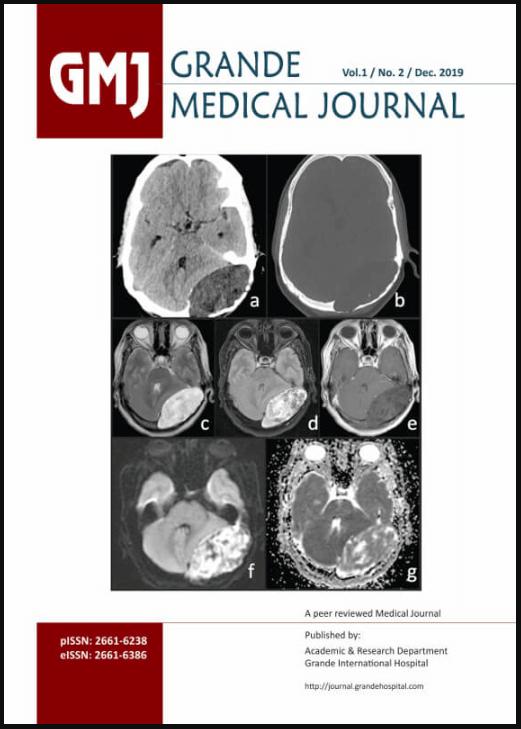Preliminary assessment of knee laxity after anterior cruciate ligament reconstruction using bone patellar tendon bone and hamstring graft
DOI:
https://doi.org/10.3126/gmj.v1i2.27062Keywords:
knee, laxity, ArthrometerAbstract
Introduction: Laxity after anterior cruciate ligament reconstruction is one of the troublesome problems lasting many years. Laxity can be tested by clinical and arthrometer preoperatively as well as postoperatively. The purpose of this study is to evaluate postoperative laxity in Nepalese population.
Materials & methods: This retrospective study was carried out in Grande International Hospital, Kathmandu. All cases which had completed six-months follow up and presented in outpatient department were included in the study. Laxity was tested by Karl Storz Arthrometer using anterior force in 20 degrees of knee flexion with maximum manual force by the same doctor. The statistical significance level was set at p=0.05. Statistical analysis was done using SPSS 16.
Results: 21 cases operated via arthroscopic method were eligible for the study. Mean age was 28.3±10.44. There were 14 (66.7%) male 7 (33.3%) female. A total of eight cases of laxity (36.36%) were identified - six males (75%) and two females (25%). Hamstring grafts accounted for three cases of laxity (37.5%) while Bone Patellar Tendon Bone Graft (BPTB) accounted for five cases (62.5%). The mean follow-up was one and half years. Hamstring and bone patellar tendon bone graft were used in 6 (28.6%) and 15 (71.4%) cases respectively.
Conclusion: Previous studies have concluded that >3mm of laxity difference is associated with difficulties in vigorous activities. However, our patients were comfortable in their daily activities without significant clinical outcome.
Downloads
Downloads
Published
How to Cite
Issue
Section
License




